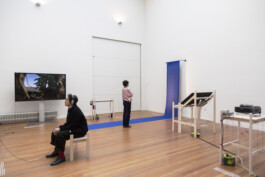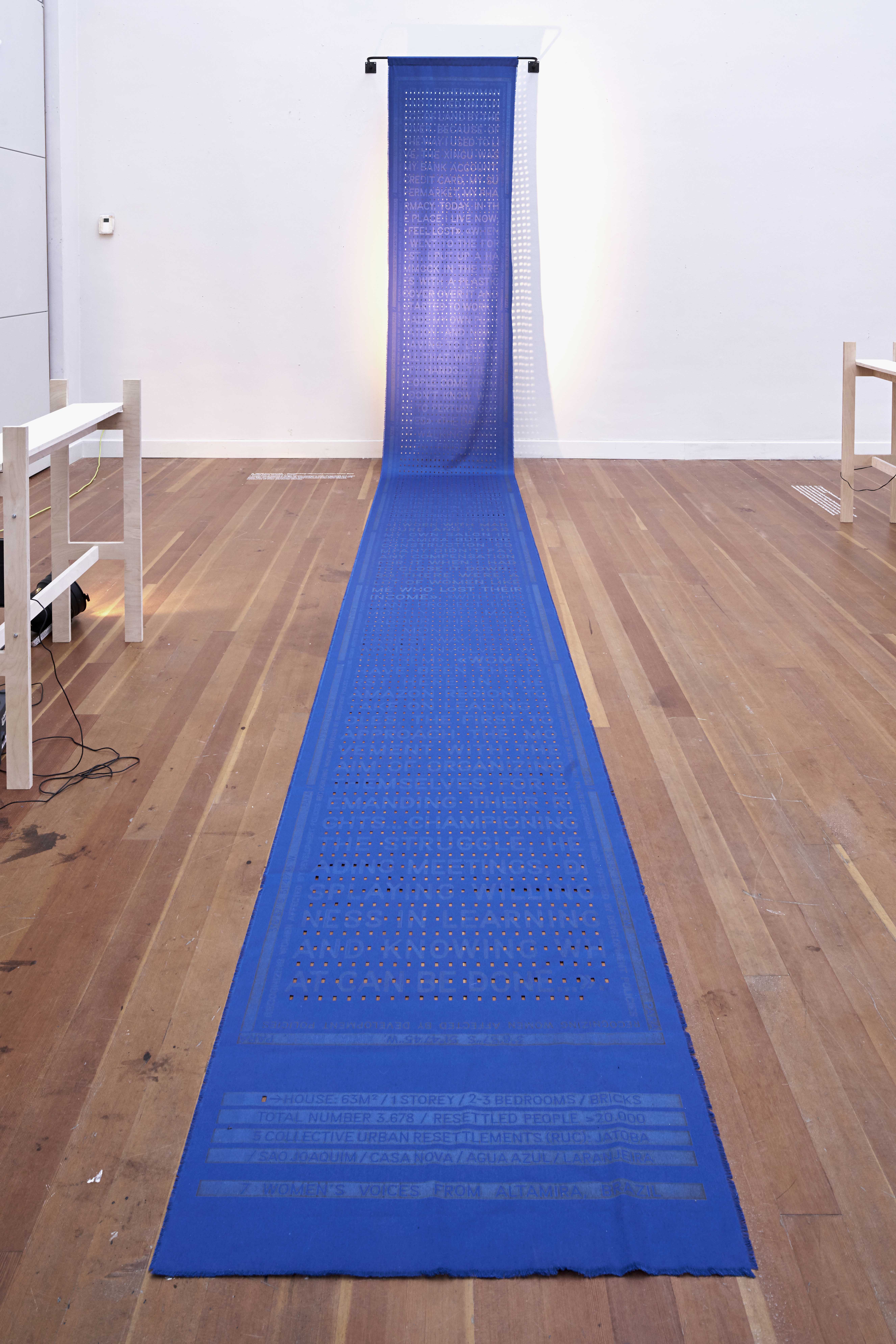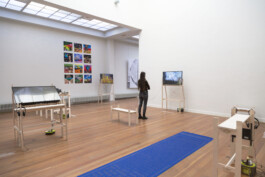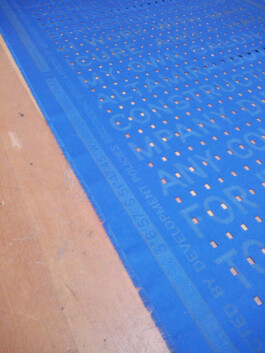



↑
3.678 households — Recognising displaced women of the Belo Monte dam — 2019
‘3.678 households — Recognising displaced women of the Belo Monte dam’ aims at recognising displaced women’s position of exclusion and misrecognition under the realisation of the big development policies for the Belo Monte Dam construction in the northern part of the Xingu River (Parà, Brazil). The building of the dam caused the forced displacement of thousands of villagers whose land had been flooded by the water of the river.
For the women, mostly fisherwomen, indigenous or rural workers, this meant the loss of the well known domestic dimension and a violent shift to a completely alien, suburban and threatening life setting.
The textile tapestry illustrates the vast number of displaced civilians and includes interview-based personal stories of seven women from the settlements of Altamira, where a total of 3.678 units houses have been assigned to displaced families. These accounts, engraved on the textile and translated into an audio file, have been selected from the fieldwork and research by Tove Mariann Heiskel from the Norwegian University of Life Sciences.
engraved textile tapestry, 0,85 x 7 m
Project in collaboration with Hiryczuk/ Van Oevelen and Edwin Keizer, International Forest Research Coordinator Greenpeace
The work has been shown a the exhibitions ‘Views From Above – Networks, Colonial Vision and Indigenous Resistance in the Brazilian Amazon’ at The Royal Academy of Art, The Hague, in collaboration with Greenpeace Nederland and ‘All Eyes On The Amazon’ during “Mag het Licht Aan” Festival at Muziekgebouw aan ’t IJ (Amsterdam) in collaboration with Hivos
Exhibition view at The Royal Academy of Art, The Hague. Pictures by Sofia de Benedictis and Roel Backaert




3.678 households — Recognising displaced women of the Belo Monte dam — 2019
‘3.678 households — Recognising displaced women of the Belo Monte dam’ aims at recognising displaced women’s position of exclusion and misrecognition under the realisation of the big development policies for the Belo Monte Dam construction in the northern part of the Xingu River (Parà, Brazil). The building of the dam caused the forced displacement of thousands of villagers whose land had been flooded by the water of the river.
For the women, mostly fisherwomen, indigenous or rural workers, this meant the loss of the well known domestic dimension and a violent shift to a completely alien, suburban and threatening life setting.
The textile tapestry illustrates the vast number of displaced civilians and includes interview-based personal stories of seven women from the settlements of Altamira, where a total of 3.678 units houses have been assigned to displaced families. These accounts, engraved on the textile and translated into an audio file, have been selected from the fieldwork and research by Tove Mariann Heiskel from the Norwegian University of Life Sciences.
engraved textile tapestry, 0,85 x 7 m
Project in collaboration with Hiryczuk/ Van Oevelen and Edwin Keizer, International Forest Research Coordinator Greenpeace
The work has been shown a the exhibitions ‘Views From Above – Networks, Colonial Vision and Indigenous Resistance in the Brazilian Amazon’ at The Royal Academy of Art, The Hague, in collaboration with Greenpeace Nederland and ‘All Eyes On The Amazon’ during “Mag het Licht Aan” Festival at Muziekgebouw aan ’t IJ (Amsterdam) in collaboration with Hivos
Exhibition view at The Royal Academy of Art, The Hague. Pictures by Sofia de Benedictis and Roel Backaert
↑